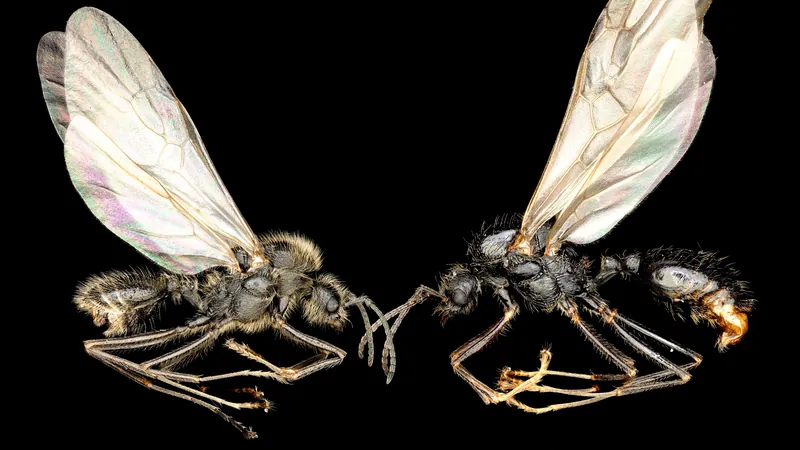
Unbelievable Discovery: European Ants Clone Members of a Different Species!
2025-09-12
Author: Ken Lee
A Scientific Marvel Unveiled
In a groundbreaking revelation that sounds straight out of science fiction, researchers have found that queen ants from the Iberian harvester species (Messor ibericus) are capable of producing male clones from a completely different ant species, Messor structor. This startling discovery challenges our understanding of reproductive biology and calls for a reevaluation of species boundaries.
A Deep Dive into Ant Reproduction
Typically, colonies of Iberian harvester ants are composed of hybrids that require mating with M. structor males for their colonies to thrive. However, scientists have come across isolated populations of M. ibericus that appear to function without any M. structor colonies nearby. "That was very, very abnormal... kind of a paradox," explained Jonathan Romiguier, an evolutionary biologist at the University of Montpellier.
Breaking Down the Paradox
When investigating this anomaly, Romiguier's team discovered a remarkable secret: the queens of these isolated populations not only lay eggs for M. ibericus but also for M. structor males without needing direct interaction with the other species. Their findings were published on September 3 in *Nature*, marking the first instance of an animal producing offspring from another species as part of its regular reproductive process.
The Cloning Mechanism Revealed
Initially met with disbelief, the research evolved from a humorous notion to a serious hypothesis as they gathered more data. The breeding cycle of ants involves queens mating just once in their lives and using stored sperm to create three types of offspring: queens, workers, and males. However, Iberian harvester ants generally require M. structor sperm to produce fertile workers.
Unraveling Genetic Mysteries
To test their theory, researchers captured males from various colonies and classified them by physical traits. They used nuclear genome analysis to confirm the genetic identities of these ants and employed mitochondrial DNA sequencing to trace lineage back to a common mother. This genetic testing revealed that some M. structor males were indeed clones produced by M. ibericus queens.
Witnessing the Process
In a pivotal moment, scientists monitored a queen over 18 months and directly documented the unusual occurrence—she was producing male offspring of both species. This confirmed that the queens are cloning M. structor ants, a phenomenon called "xenoparity," and are not transmitting any of their nuclear DNA.
What It Means for Science
Denis Fournier, an evolutionary biologist at the Free University of Brussels, expressed his astonishment at the findings, noting, "It's jaw-dropping! Most of us learn that species boundaries are firm, yet here is a system where ants regularly cross them as part of normal life." This discovery not only challenges entrenched ideas about species delineation but also raises important questions about cooperation and conflict in natural ecosystems.
A New Frontier in Evolutionary Biology
As researchers delve deeper into this astounding reproductive mechanism, they aim to clarify how and when this system emerged among Iberian harvester ants. The findings are a powerful reminder to remain open to the unexpected in nature, potentially reshaping our understanding of evolutionary dynamics.


 Brasil (PT)
Brasil (PT)
 Canada (EN)
Canada (EN)
 Chile (ES)
Chile (ES)
 Česko (CS)
Česko (CS)
 대한민국 (KO)
대한민국 (KO)
 España (ES)
España (ES)
 France (FR)
France (FR)
 Hong Kong (EN)
Hong Kong (EN)
 Italia (IT)
Italia (IT)
 日本 (JA)
日本 (JA)
 Magyarország (HU)
Magyarország (HU)
 Norge (NO)
Norge (NO)
 Polska (PL)
Polska (PL)
 Schweiz (DE)
Schweiz (DE)
 Singapore (EN)
Singapore (EN)
 Sverige (SV)
Sverige (SV)
 Suomi (FI)
Suomi (FI)
 Türkiye (TR)
Türkiye (TR)
 الإمارات العربية المتحدة (AR)
الإمارات العربية المتحدة (AR)